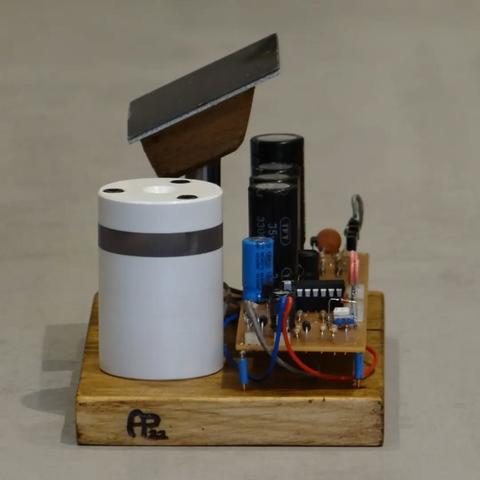Ongoing research of the forest datacentre, actually #
nodatacentre So, snow has come, beginning of january, good time to look at the energy and online infra in the lab. To recap, we have two solar panels on the greenhouse, first one on the front grass wall facing south (see in the picture as dark rectangle), which is almost vertical and in wither perpendicular to sun, barely rising above the opposite hill. This has 140 Wp, the second one with 180Wp is on the roof, facing moreless up. This can give out more than 100W on sunny days in winter. A little bit worse it is during more days with heavy clouds, when the PV output reaches only 5 - 10 W during daylight, which takes 8 hours only and then it runs 16h on battery with complete darkness. We have temperatures 2-7 ˚C last month, because with climate change, below zero temperatures are not so often. Ofcourse battery operates better with 7 degrees than in 2. Its a lead AGM 12V, 80Ah capacity, but 4 years old, which I already replaced but for the winter not to damage the new one I've put back the old one. The charger is Epever MPPT 20A. So the setup is pretty low-tech, both panels are classic technology (p-type).
I started to measure at the end of november with Raspberry B+ with Enviro HAT (which I wanted for better measure of lighting and you can see on the photos that in some point of day the sun hits the kitchen datacentre directly) and USB mobile data stick. Connected was also Odroid N2+ without any load, which I could shut down remotely. This was taking approx. 4.5W and was running fine till 9.12. when several consecutive overcast days drained the battery and I continued only with Raspi with HAT and data stick which was taking 2.5W. Its quite high, I guess the 4G data device is taking around 1W. This was working until 14.12. when the battery hit 10.9V and charger disconnected the power and reconnected next day when it reached 12.5V. With some calculation, we have theoretically 1KWh in the battery, but it cannot be used all, the discharge should be 50% only, or 70-80% max. And the daily consumption is 5Wh * 24, so 5 days is 600Wh. Not suprisingly, this is some limit, taking into account the temperatures around zero and age of the battery take the capacity down.
31.12. I replaced Raspberry B+ with Leaf server, which is more powerful Raspi 3B with 1Gig of RAM, USB microphone and Raspi camera. This was consuming over 4W, which seemed high, turning off the camera service, python script waiting for http requests, it went to 3.2-3.7W (that including 1W of USB mobile data). Running the camera software with picture online and streaming audio means 1.5W more (4.7 - 5.2W).
So what to do to have a stable service for some reliable application, staying low-tech, cheap and not too extractive for minerals? Of course multi-kW solar setup with residential function would solve this, but this is research on minimal tech and architecture. Another research direction is using Arduino based devices and go with mud batteries - I wonder how would that perform in cold, but let's leave that aside. For SBCs running some web services we need 5W minimum, sustained 6-7W would be better. It is possible to achieve with better battery (higher capacity, Li-FePo which can be discharged more) or more PV power from panels, especially with lower lighting, so using n-type 2nd generation panel with higher output. Other option is turning off the devices during night and using load balancing proxy (which is already set up on online server) redirecting the traffic during night to backup site. So offloading only the daytime traffic, which needs some sophisticated backup syncing in case of editing the sites continuously and of course power management of that on-site. But I like the field research servers "living" there, listening to stream, so I think we go with something running there, optimized during the night...
#
solar #
solstice #
photovoltaic #
streaming



